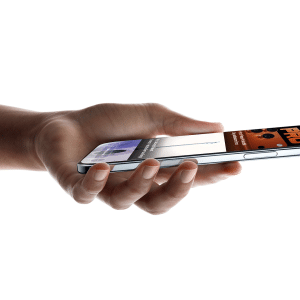Diabetes is a chronic condition that affects millions of people worldwide, and one of the most important aspects of managing diabetes is monitoring blood sugar levels. Glucose sensors, which measure the amount of glucose in the bloodstream, have become an essential tool for managing diabetes. The future of glucose sensors is looking bright, as technology is constantly evolving to make these devices more accurate and user-friendly.
Rumors have been circulating that Apple is developing a glucose sensor for the Apple Watch. This would allow users to easily track their blood sugar levels throughout the day, and make adjustments to their insulin doses accordingly.
The integration of a glucose sensor would also make it easier for users to track their glucose levels over time. The Apple Watch already has a variety of health-tracking features, such as the monitoring of heart rate, sleep, and activity levels. Adding a glucose sensor would allow users to have all of their health data in one place, enabling them to more easily identify patterns and trends in their glucose levels.

The rumored sensor would also allow for more accurate tracking. The current glucose sensors are dependent on a small needle to take a tiny drop of blood, which is then analyzed to determine the glucose level. These are not always accurate, and this is where the rumored glucose sensor from Apple comes in; it uses non-invasive technology which would make it far more convenient and less painful for the users.
Important facts about diabetes
- Diabetes is a chronic disease that affects the way the body processes blood sugar (glucose);
- There are two main types of diabetes: Type 1 and Type 2;
- Type 1 diabetes, also known as juvenile diabetes, is an autoimmune disease in which the body’s immune system attacks and destroys the cells that produce insulin;
- Type 2 diabetes is characterized by the body’s inability to properly use insulin, often due to obesity and lack of exercise;
- Symptoms of diabetes include increased thirst and urination, fatigue, and blurred vision;
- Uncontrolled diabetes can lead to serious complications, such as heart disease, nerve damage, and kidney damage;
- Diabetes is a leading cause of blindness, amputations, and kidney failure;
- Diabetes is manageable through lifestyle changes, such as diet and exercise, as well as medication;
Raman spectroscopy method
Apple is reportedly developing a glucose sensor for the Apple Watch that uses a technique called Raman spectroscopy. This method is based on the Raman effect, which occurs when light is scattered by molecules in a sample. The scattered light has a different wavelength than the incident light, and this difference can be used to identify the molecules present in the sample.
In the case of glucose monitoring, a small amount of light would be shone on the skin and the scattered light would be analyzed to determine the glucose level in the tissue. Raman spectroscopy is non-invasive and does not require any skin penetration, making it a promising technique for glucose monitoring. However, it is still in development and has not been officially announced by Apple.

It is important to note that these are just rumors at this point and Apple has not officially announced the development of a glucose sensor. However, the potential for such a device to revolutionize diabetes management is exciting.
The integration of a glucose sensor with the Apple Watch could be a game changer. The ability to easily and continuously track blood-sugar levels in real time and make adjustments to insulin doses accordingly, all from the Watch, would make diabetes management more convenient for users.
Keep an eye out for more updates on this topic and other exciting developments in medical tech.













